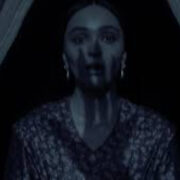Luke Skywalker: The Hero Of The Mono-Myth
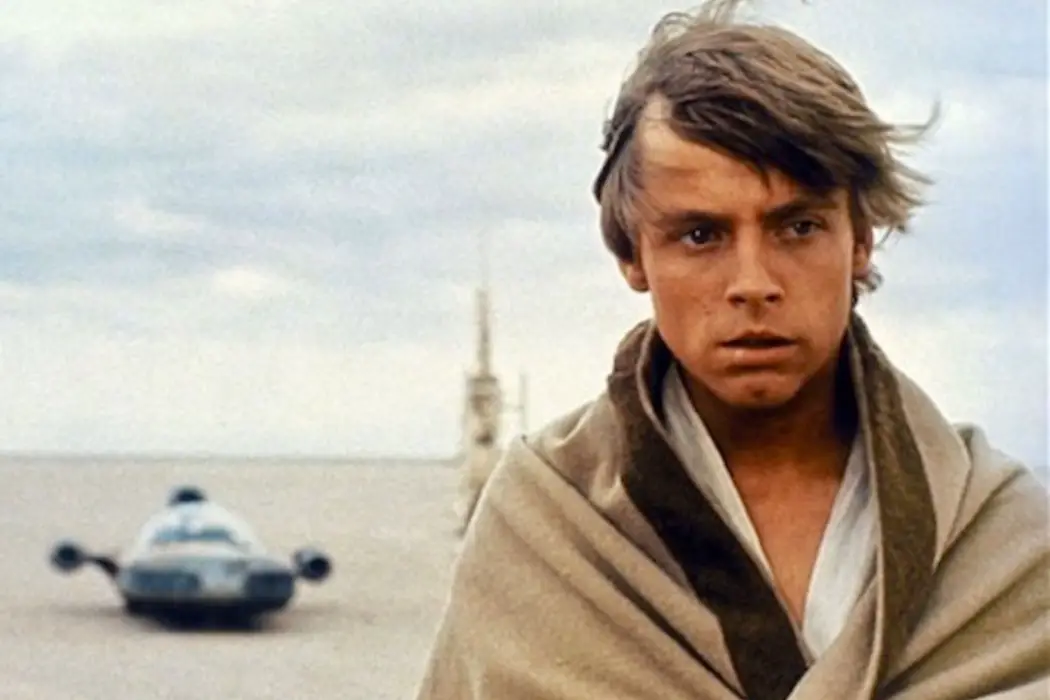
Luke Skywalker is the classic protagonist who goes on a transformational journey to defeat evil. It’s remarkable that over forty years after his creation, audiences still have a strong connection to him. Good conquering evil is a story that’s as old as story-telling. Why do people care so much about this iteration of the story? What is it about this naïve idealistic farm boy that appeals to us?
Much has been written on the Jungian archetypes in Star Wars, but the recognizable archetypes in Star Wars are not what’s responsible for our attachment to the characters. What creates our attachment to Luke is the execution of the film. The sights, the sounds, the movement of the characters, and the performance of the actors are what leave an impression on us. In this article, I will break down six scenes from the original Star Wars trilogy to determine exactly how the audience’s attachment to Luke is created and retained by the events of the films.
Something More
How a character moves informs the audience of who that character is. The audience learns how juvenile Luke is when he throws a kick and pouts on the out of his uncle’s home. It’s here that Mark Hamill’s boyish charms works over the audience as Luke looks longingly at the binary sunset. This alien sight represents the unknown and the greater things that lie out there in the world.
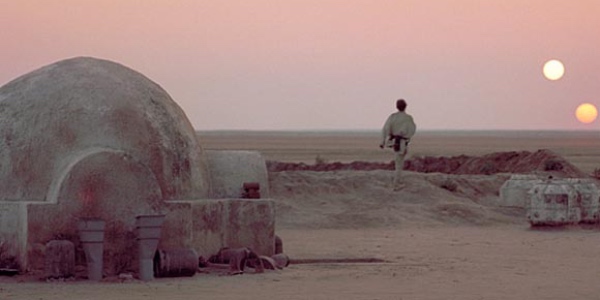
The wind-blowing and the close-up on Luke evokes a familiar feeling in the audience. Regardless of race, gender identity, or sexuality, we’ve all had that yearning for something more. Even a deaf person who cannot hear John Williams’ masterful score sympathizes with Luke’s strife. This scene humanizes Luke and helps the audience identify with him.
Vulnerability
As the story shifts gears into the third act, we’re given this small moment of vulnerability with Luke. On the Millennium Falcon, he mourns for the passing of Ben Kenobi. It’s a short scene designed to build more sympathy for Luke and to demonstrate that relationships between the characters matter. He’d finally found someone he could connect with and look up to.

Down moments like this keep the audience emotionally engaged with what’s happening in the story. Protagonists have to emotionally react to what’s happening in the story to show the audience that the story matters. A protagonist who doesn’t emotionally react to anything is a boring protagonist. No one wants to watch a boring protagonist
Flawed
In The Empire Strikes Back, Luke carries himself with more poise but deep down, he is still the impatient child we met in the prior film. No scene better encapsulates Luke’s flaws as a character than this training scene in Dagobah in the Empire Strikes Back.
As Luke trains with Yoda, his X-wing falls deep into the swamp. We’re shown who Luke is when he gives up after failing to get his X-wing out. When Luke walks away from Yoda’s impassioned speech about the Force, we see the significant difference in size and demeanor between him and Yoda. This is so when Yoda does what Luke can’t, everything he’s said about the Force is legitimized.

This scene builds attachment to Luke by showing us where Luke could be if he overcame his flaws. It’s meant to evoke another universal feeling, the feeling that a person should strive to be their best self even if it’s difficult. Again, allowing the audience to be on the same emotional wave-length as young Skywalker.
Resolve
The Empire Strikes Back is a brutal take-down of Luke. He’s beaten down mentally, physically, and spiritually in this film. In the beginning of the film, his face is scarred by a Wampa and he nearly freezes to death. In the second act, Yoda tests his resolve. In the end, Luke loses his hand and finds out the Jedi father he’s admired for years is Darth Vader, his worst enemy.
In Luke’s final scene of the film, he has a new robotic hand put on his wrist. He sees Leia staring out into the void of space. Luke has a choice here. He can give up as he did before or he can keep fighting and keep believing. This time he chooses the latter and goes over to comfort Leia. They stare out into the void together. This scene evokes sympathy for Luke and makes him admirable. It shows he’s learned from his time on Dagobah and will soon become the best version of himself in the next film. It’s an organic moment of character growth.

Organic character growth is the result of small changes over time to a character. When the audience meets Luke in the next film, he is very different. He’s confident and has a strong belief in the Force. They’re able to accept his differences because of this scene and others before it.
Belief
In this scene from Return of the Jedi, Luke stands defiant and defenseless. He’s spared his father’s life and tossed away his lightsaber. He offers no resistance as he’s tortured by the Emperor. The choice of lightning shows the cruel nature of the Emperor. It’s not enough for him to kill Luke, he must make him suffer.
Luke calls out to his father for help. In what could be his final moments, he clings on to the hope that his father is a good man. Luke’s weakness in the prior film is now his greatest strength, a result of the choices made by Luke up to this point. These choices were understandable and human so the audience remained attached to the character despite him changing.
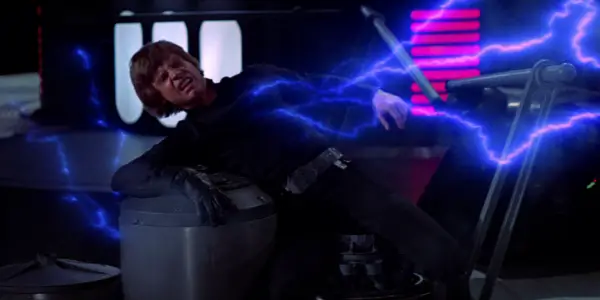
The audience’s anticipation for Vader’s redemption reaches a boiling point during this scene. It’s inevitable that Vader will save Luke which would have been absurd to think of during the first film. When Vader throws the Emperor down the shaft, it’s Luke’s crowning achievement in the trilogy.
Belief is an underlying theme in Star Wars and it is what saves Luke here. The audience may not have noticed this but they’ve been fed information on this theme throughout the trilogy. Of course the last film had to come down to Luke being saved by his belief. It’s what makes this scene so great.
When viewing this scene, it’s better to ignore that context that George Lucas created later in the prequels. Knowing the history of Vader as a child-killer soils his redemption. You almost wish Luke had listened to the Emperor and killed his father.
Triumphant
In this last scene of the original trilogy, the audience is rewarded for their emotional investment in Luke’s journey with a happy ending. While I’m not a fan of the Ewoks, I do appreciate the lightness that their dancing brings to the ending. It contrasts the bleak but hopeful ending of The Empire Strikes Back. Luke sees his father standing alongside Yoda and Ben Kenobi, a Jedi once again. Luke gives a smile and is brought back into the party by Leia. In this scene, Luke’s dreams of something greater have been realized. He’s earned his happy ending and another tale of good conquering evil is over.
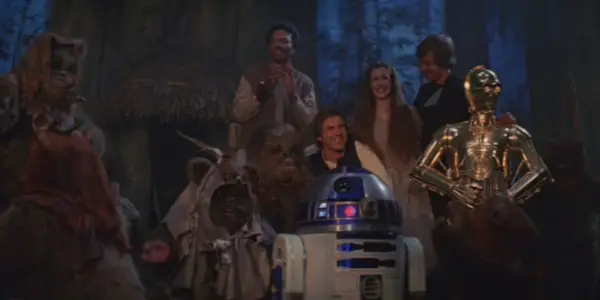
Conclusion
Luke is a simple character with a straight-forward character arc. He fails many times throughout the films, which keeps him sympathetic and relatable. Everything he achieves, he has to earn. His many failures accentuate his triumphs in the iconic scenes of the original Star Wars trilogy. He is a beloved character because he’s a vulnerable human character who organically grows from his experiences. I love the character because of his resolve especially in Return of the Jedi. His unwavering belief in his father is very admirable.
Why do you think people still love Luke Skywalker so much? Tell us your thoughts in the comments below!
Does content like this matter to you?
Become a Member and support film journalism. Unlock access to all of Film Inquiry`s great articles. Join a community of like-minded readers who are passionate about cinema - get access to our private members Network, give back to independent filmmakers, and more.




